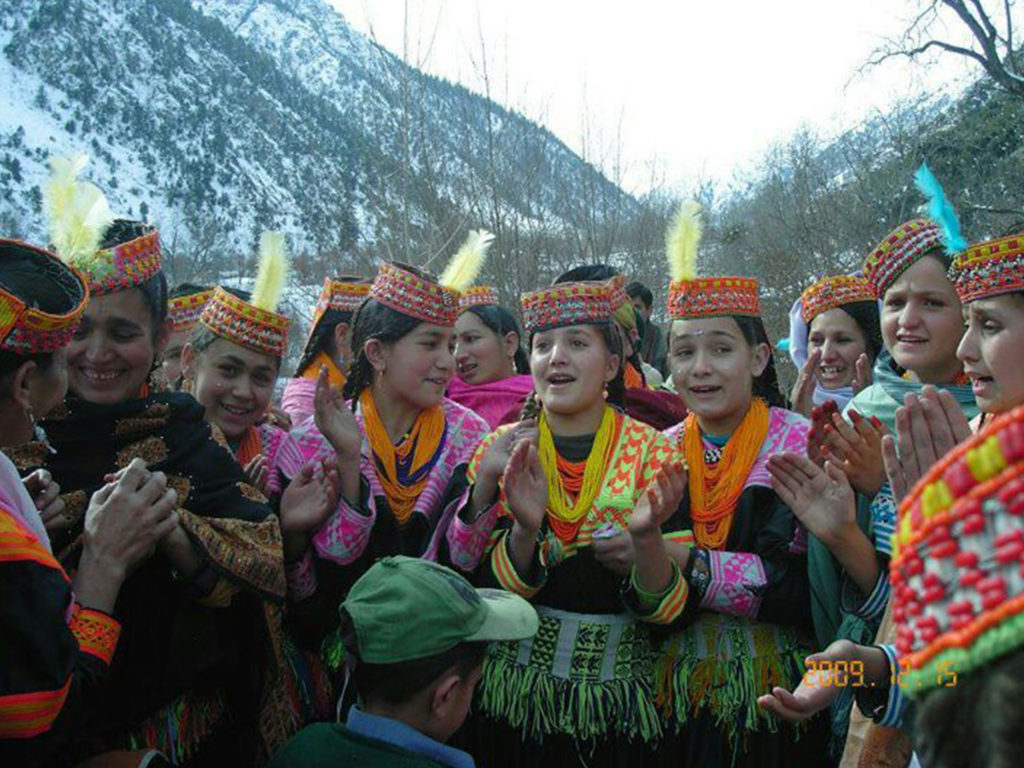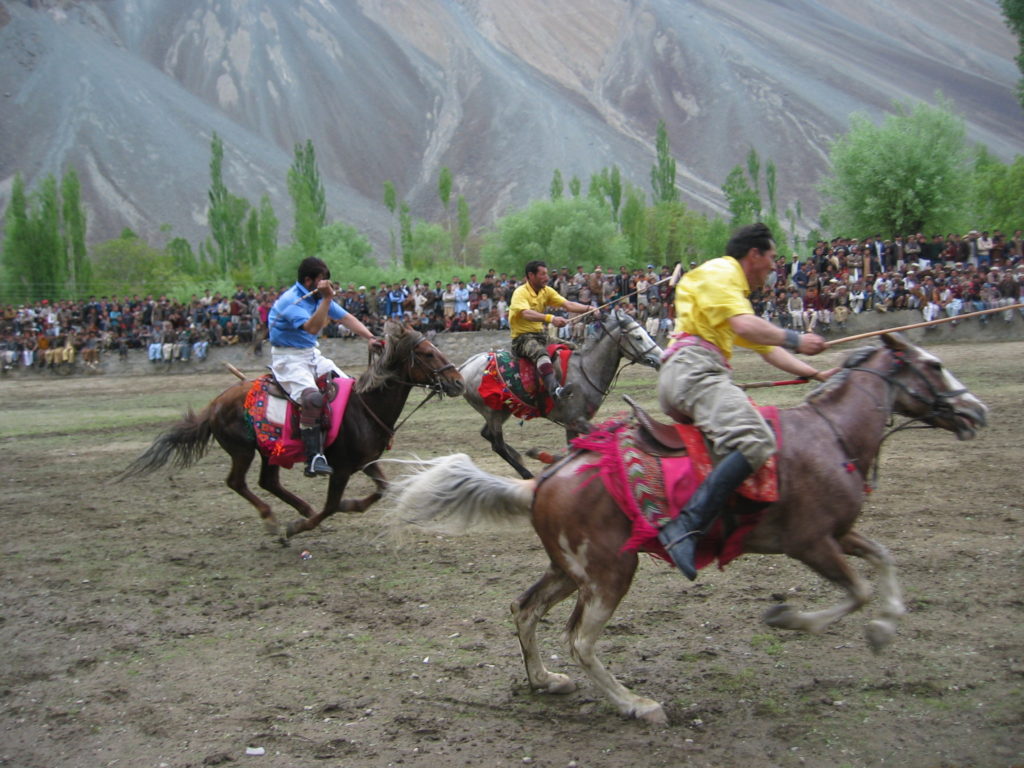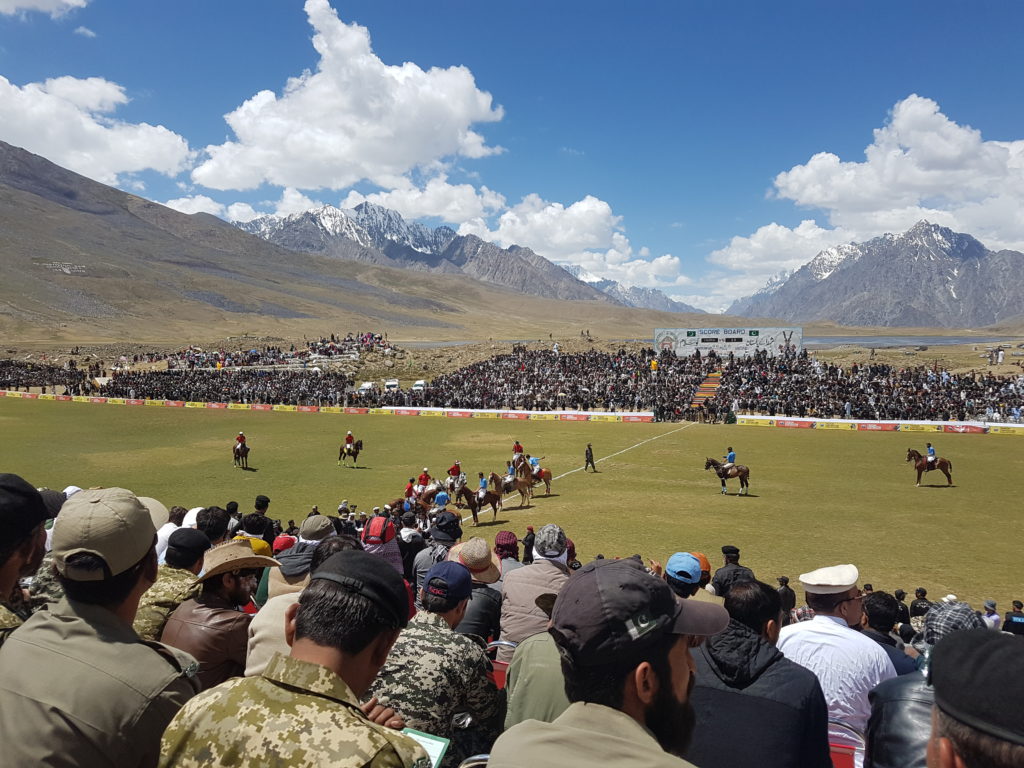Kalash Tribes of Hindukush

Kalash Valley is a place out of this world. There are no doctors, no mobile phones, no newspapers and no tarmac roads. But they still look the happiest people on earth.
They follow centuries-old traditions and customs and still send their women to secluded houses called ‘Bashali’ during menstruation and child birth as they are considered impure. No one even touches them during this period.
During a trip to Kalash Valley in Chitral, Gulf News found out that the Kalash sing and dance around the bodies of their loved ones for two to three days before burying them in a coffin and offer a feast with a sacrifice of 30 to 40 goats to guests who come to celebrate (not mourn) the death.
A Kalash becomes poorer if anybody dies in his family because he has to throw lavish feasts and sacrifice his goats. But the tradition continues.
The Kalash’s life revolves around their festivals throughout the year. Dancing, singing, brewing mulberry wine and following rituals and culture is their way of life. They take pride to be Kalash and do not want to change their primitive ways of living. But they do want education and health facilities in addition to jobs and better road access from their valleys to the outer world.
Jastakhan: A community hall for singing and dancing also to celebrate festivals !
The Kalash never miss a chance to dance and sing even when someone dies in the family. This is perhaps the most interesting and unique phenomenon. The duration of the rituals depends upon the socio-economic position of the dead person or his family. This is why there is proverb in local language that ‘when a Kalash is buried his wealth is dug out and when he is alive his wealth is buried’.
Though the close family members of the dead mourn in the house, they have to arrange for big feasts and arrange for celebrations. They put the body in the coffin and keep it for two to three days in the graveyard. Every Kalash community member from the three valleys is informed about the death. Women in the family sit around the body with their hair covering their faces while rest of the community people keep on dancing around the body. The Kalash from different villages continue to come and join the celebrations.
Whenever a new group of people comes to the celebration, they fire gun shots in the air to announce their arrival. Then one of them stands near the body and starts telling stories about the life of the deceased. As soon as he finishes, the dancing resumes and the same practice continues for two to three days. Some 30 to 40 goats are sacrificed during two to three days of the celebrations.
The Kalash used to leave bodies in the graveyard without burying them but now they have started burying them. They also bury personal belongings of the deceased like axe, knife and gun and also leave his pillow and charpai (his bed) at the grave. They do not bring the belongings back as they believe evil spirits come home.
There are three famous Kalash festivals
- Joshi or Chilim Just festival Mid May
- Phool festival End September
- Chowmas Mid December
We can designs detailed itinerary according to the 3 Kalasha festivals ,but below itinerary will hive you an idea.
Itinerary
Day 01- Arrival to Islamabad Hotel or Gust House
Day 02 – Fly or drive to Nagar Fort of lowe Chitral
Day 03 – Drive to Bumburat or Rumbur
Day 04 – Festival
Day 05 – Festival
Day 06 –Drive to Chitral town
Day 07 –Explore around Chitral
Day 08 –Fly to Islamabad or drive Peshawar
Day 09 – Explore the old part of Peshawar
Day 10 – Drive via GT road to Islamabad passing or visiting Attock fort ,junction point of Indus and Kabul river ,Taxila Museum and Truck Garage etc
Day 11 – Departure
Yasin Spring Festival and Blossom Tour

Itinerary
Day 01 – Arrival to Islamabad airport and transfer to the hotel .afternoon explore around . Hotel
Day 02 – Drive over Babusar Pass or via KKH to Chilas about 12 hrs .Hotel
Day 03 – Drive to Birgal Ishkomen about 5 to 6 hrs. Roya Guest House
Day 04 – Full day excursion meeting local community community. Royal Guest house
Day 05 –Drive to Yasin about 4 hrs .On the way visit Gupis Fort . Yasin Fort Hotel
Day 06 – First day of spring festival , Yasin Fort Hotel
Day 07 – Second day of festival . Yasin Fort hotel
Day 08 – Visit of Muduri Fort and mazar Lalak Jan . Yasin Fort Hotel
Day 09 – Drive to Phander valley and drive to Gahkuch. Hotel Green Palace
Day 10 – morning visit Gahkuch Fort and Jadaw Malak and after drive to Hunza. Hotel
Day 11 – Visit of Altit and Baltit Forts . Hotel Eagal Nest
Day 12 – Visit to Hoper Nagar valley ,Attabad lake,Gulmit,Hussani bridge ,Passu glacier . Hotel Marcopolo inn
Day 13 – Drive to Chilas or Naran . Hotel
Day 14 – Drive to Islamabad. Hotel
Day 15 – Departure
Shandur Polo Festival and Ghizer highlights

Itinerary
Mountain Range Himalaya and Hindukush
Duration: 12 nights / 13days, 5 camping and 6 hotel nights
Max Height: 4
Grade: Easy
Festival dates 7 to 9th July each year
Day 01 – Arrival to Islamabad and transfer to hotel or guesthouse.
Day 02 – fly to Gilgit or drive over Babusar pass to Chilas or Gilgit. 12 to 15 hrs. Hotel
Day 03 – Drive to Birgal Ishkomen. Guesthouse
Day 04 – Drive to Shandur Pass 3734m 7 to 8 hrs. Camping
Day 05 – Polo Match
Day 06 – After polo match drive to Yasin valley . Fort Hotel Yasin
Day 07 – Day visit to Darkot village on the way visit Mazar Lalak Jan ,Maduri Fort .Yasin Fort Hotel
Day 08 – Drive to Hunza about 6 hours. Hotel Eagle Nest
Day 09 – Visit Altit and Baltit Forts in the morning and after noon drive to Gulmit .Hotel Marco polo
Day 10 . Drive to Chilas or Naran . Hotel
Day 11- Drive to Islamabad . Hotel
Day 12 – Departure
